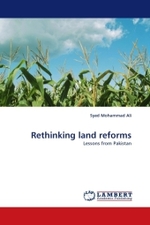- ホーム
- > 洋書
- > ドイツ書
- > Mathematics, Sciences & Technology
- > Earth Science
- > geography
Full Description
This book focuses on a representative example and one of the world's largest steppe conversions, and provides a detailed overview of the results of the BMBF-funded research project KULUNDA. As part of the Siberian virgin land policy, the Kulunda steppe was transformed into agricultural land from 1954 to 1965.
In the course of the project, a multidisciplinary research team conducted a natural, social-economic and agro-scientific cause-and-effect analysis of (agro-)ecosystem destabilisation, as well as various field trials covering tillage and crop rotation options in their socio-economic context.
The ecologically and economically sound findings offer strategies for combining climate smart land utilization, ecosystem restoration and sustainable regional development, and can readily be applied to other virgin land conversion efforts. In addition, the findings on the Eurasian steppes will expand the current conversion literature, which mainly consists of the 'Dust Bowl' literature of the North American plains. Given its scope, the book will appeal to scientists, professionals, and students in the environmental, geo- and climate sciences.
Contents
Foreword.- Chapter 1: Background to the natural landscape and the consequences of the ecosystem conversion.- Chapter 2: Socio-economic and institutional drivers and impacts of land use change.- Chapter 3: Potentials and Strategies of adapted land use as basis for ecological and social-economic sustainable development of the rural landscape.- Chapter 4: Change in Regional Development.- Chapter 5: Summary and outlook.- Acknowledgement.








